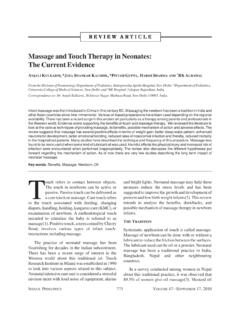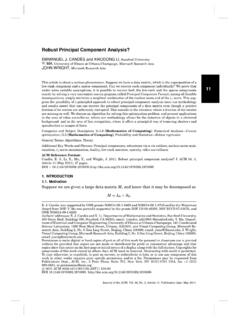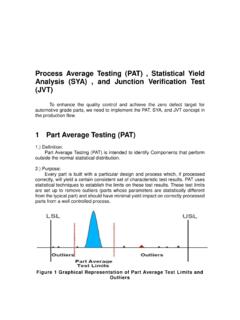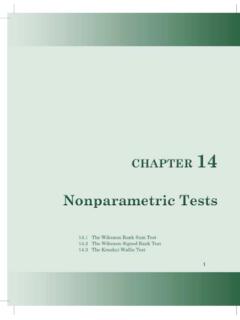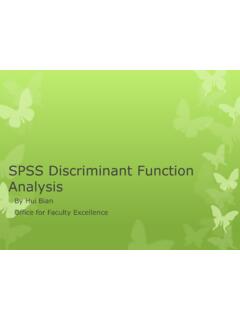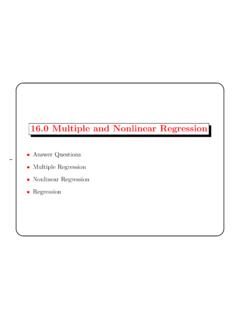Transcription of Revised IAP Growth Charts for Height, Weight and Body Mass ...
1 INDIAN PEDIATRICS47 VOLUME 52__JANUARY 15, 2015 Revised IAP Growth Charts for Height, Weight and Body Mass Index for5- to 18-year-old Indian ChildrenVAMAN KHADILKAR, SANGEETA YADAV, KK AGRAWAL, SUCHIT TAMBOLI, MONIDIPA BANERJEE, *ALICE CHERIAN,#JAGDISH P GOYAL, $ANURADHA KHADILKAR, ^V KUMARAVEL, @V MOHAN, **D NARAYANAPPA, ##I RAY AND VIJAYYEWALEFrom Indian Academy of Pediatrics Growth Charts Committee; *Department of Pediatrics, Lakeshore Hospital, Kochi, Kerala;#Department of Pediatrics, AIIMS, Rishikesh, Uttarakhand;$Hirabai Cowasji Jehangir Medical Research Institute, JehangirHospital, Pune; ^Alpha Hospital and Research Centre, Institute of Diabetes and Endocrinology, Madurai; @Diabetes Research,Dr.
2 Mohan s Diabetes Speciality Centre, Chennai; **Department of Pediatrics, JSS Medical College, JSS Univeristy, Mysuru; and##Department of Human Physiology, Ramakrishna Mahavidyalaya, Tripura; to: Dr Vaman Khadilkar, Convener, IAP Growth Chart Committee, Consultant Pediatric Endocrinologist, Hirabai CowasjiJehangir Medical Research Institute, Jehangir Hospital, Pune, India. 2007, the Indian academy of Pediatrics (IAP) Growth monitoring guideline committee designedgrowth Charts for Indian children from birth to 18years of age [1]. The Growth references used inand obesity in children have shown that not only is therea rise in the incidence of overweight and obesity butadiposity rebound is seen at a younger age [5].
3 Thepattern of Growth in children has thus changed and hencewe urgently need to update Indian Growth 2006, the World Health Organization (WHO)published the first Growth standards as prescriptivecharts for children under the age of 5 years to be used as asingle uniform global standard; IAP and Government ofIndia have adopted these standards for use in Indianchildren under 5 years of age. These standards areaspirational models which define how under-fivechildren of the world should grow rather than how theyactually grow. Many countries have since then changedtheir Growth Charts for under-five children as per theWHO Multicentre Growth Reference Study [6].
4 GGGGGUUUUUIIIIIDDDDDEEEEELLLLLIIIIINNNNN EEEEESSSSSJ ustification: The need to revise Indian Academy of Pediatrics(IAP) Growth Charts for 5- to 18-year-old Indian children andadolescents was felt as India is in nutrition transition and previousIAP Charts are based on data which are over two decades : The Growth Chart Committee was formed by IAP inJanuary 2014 to design Revised Growth Charts . Consultativemeeting was held in November 2014 in Mumbai. Studiesperformed on Indian children s Growth , nutritional assessmentand anthropometry from upper and middle socioeconomicclasses in last decade were identified.
5 Committee contacted 13study groups; total number of children in the age group of 5 to 18years were 87022 (54086 boys). Data from fourteen cities(Agartala, Ahmadabad, Chandigarh, Chennai, Delhi, Hyderabad,Kochi, Kolkata, Madurai, Mumbai, Mysore, Pune, Raipur andSurat) in India were collated. Data of children with Weight forheight Z scores >2 SD were removed from analyses. Data on33148 children (18170 males, 14978 females) were used toconstruct Growth Charts using Cole s LMS : To construct Revised IAP Growth Charts for 5-18 yearold Indian children based on collated national data from publishedstudies performed on apparently healthy children andadolescents in the last 10 : The IAP Growth chart committeerecommends these Revised Growth Charts for height, Weight andbody mass index (BMI) for assessment of Growth of 5-18 year oldIndian children to replace the previous IAP Charts .
6 Rest of therecommendations for monitoring height and Weight remain as perthe IAP guidelines published in 2007. To define overweight andobesity in children from 5-18 years of age, adult equivalent of 23and 27 cut-offs presented in BMI Charts may be used. IAPrecommends use of WHO standards for Growth assessment ofchildren below 5 years of : Adolescent, Child, Growth Charts , India, guidelines were based on the then availablemulticentric data that was collected in 1989 on affluentIndian children, which is now more than 20 years old[2,3]. The pattern of Growth of a population changes withtime and hence it is recommended that references shouldbe updated regularly so that they reflect current growthpatterns of children and are representative of seculartrends [4].
7 As the current IAP Growth reference curvesare based on data collected more than 2 decades ago,they may not be suitable for use any more, especially inan economically upwardly mobile country like India,where major changes in nutrition status of children havebeen witnessed. Recent studies from India on overweightINDIAN PEDIATRICS48 VOLUME 52__JANUARY 15, 2015 IAP Growth CHART COMMITTEEREVISED IAP Growth CHARTSFor children between 5-18 years of age, WHO hasstated that it would not be possible to have prescriptivegrowth standards because environmental variables inthis age group cannot be controlled for; hence, Charts bythe WHO for 5-18 year old children are based onstatistical reconstruction of 1977 National Centre forHealth Statistics data and are called Growth referencesand not standards [7].
8 However, Growth patterns differamongst different populations, especially in childrenabove the age of 5 years, as nutritional, environmentaland genetic factors, and timing of puberty seem to play amajor role not only in the attainment of final height butalso in the characteristics of the Growth curve. Hence, itis necessary to have country-specific Growth Charts tomonitor Growth of children between 5-18 are several recent reports on Growth data ofaffluent Indian children, multicentric as well as regional,that can potentially be used as reference data; however,there is no national consensus on which Charts to use [8].
9 While these studies have made an attempt to address theissue of monitoring Growth in Indian children; to date, nounified Charts have been constructed. Further, childhoodobesity is a growing problem in urban India and hencethere is a worry about normalizing obese children ifgrowth Charts are prepared on these contemporary datasets. Since a lot of children around the world are showinga rising trend of increasing Weight , no population isperfect on whom ideal Weight Charts can be , a statistical approach has been suggested byexperts, including the WHO [6,9]. WHO has described amethod to eliminate unhealthy weights from populationsby removing children who have Weight to height z scoresabove +2 SD.
10 This method eliminates children withunhealthy weights especially at the upper percentilesreducing the effect of obesity which is common inchildren of today, thus effectively dealing with the issueof normalizing obese children s is an integral part of childhood and growthmonitoring is critical for the assessment of health anddisease in an individual child and the community as awhole. Since Growth is an indicator of a child s healthand nutrition, updated population-specific referencegrowth Charts are needed [10]. Taken together, there is anurgent need to construct unified Growth Charts , adjustedfor Weight , for assessing the Growth of contemporaryIndian children from 5-18 years to be used together withthe WHO standards (0-5 years).






